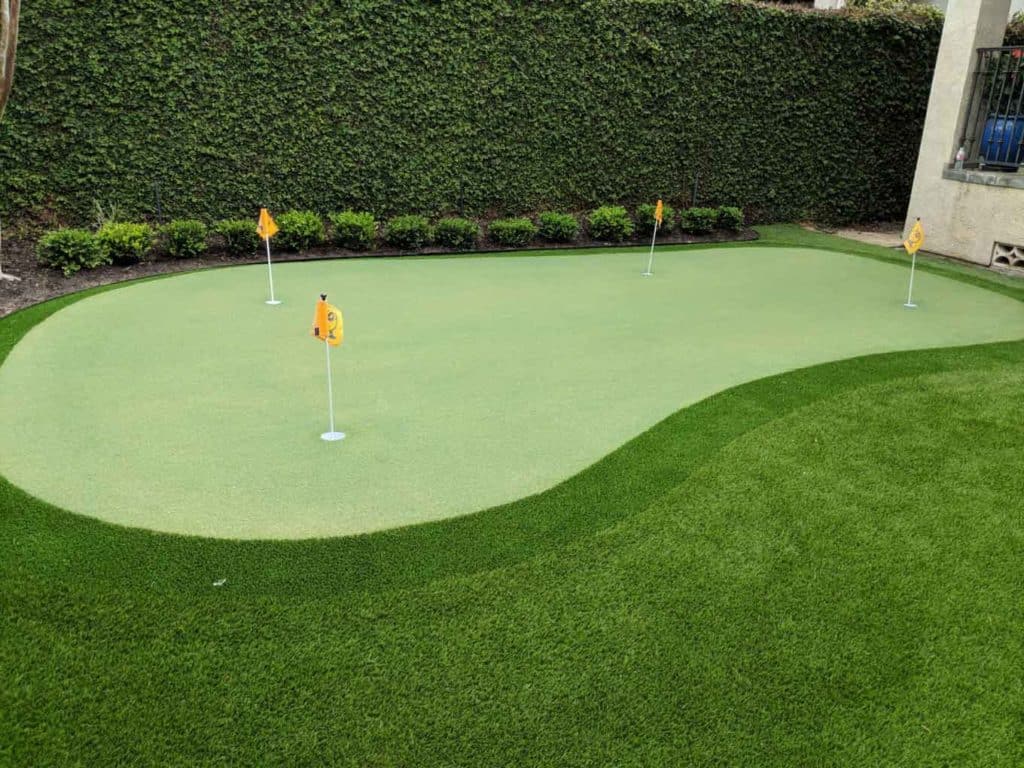Indoor artificial putting green has become increasingly popular in recent years, and it’s no surprise why.With the ability to withstand harsh weather conditions while maintaining a lush appearance year-round,artificial turf is an attractive option for homeowners looking to create their own personal oasis.One of the most common uses for artificial grass is installing a backyard putting green.In this article, we will explore everything you need to know about choosing the best artificial grass for your putting green.
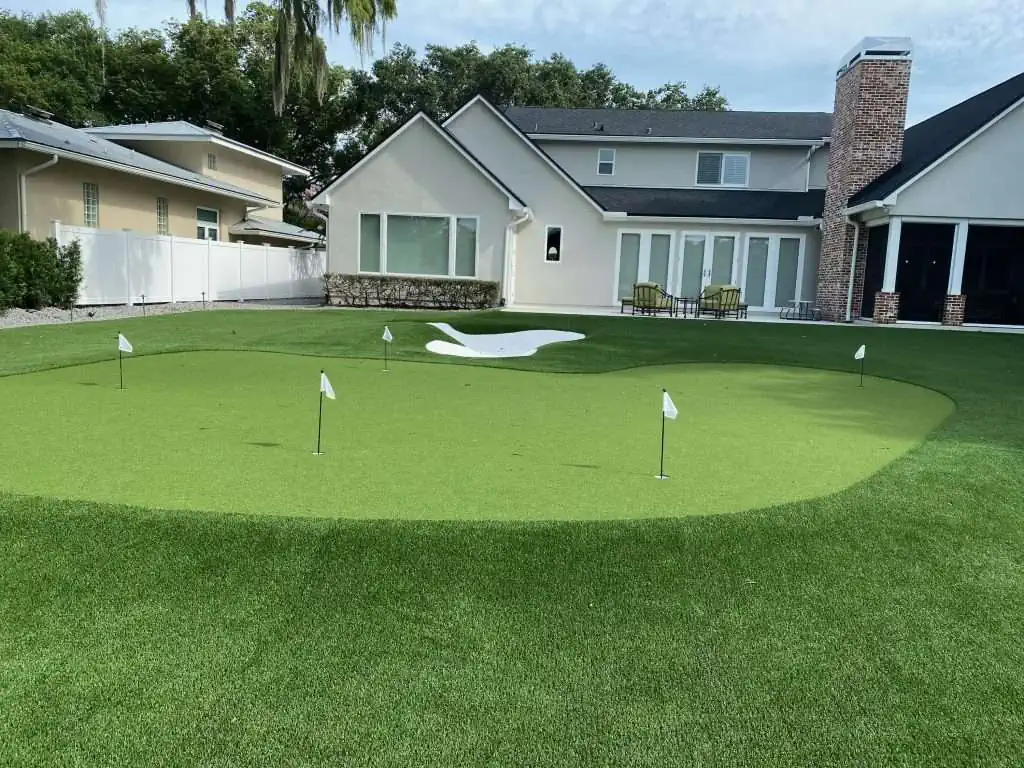
Pile Direction
It’s important to choose a product that has the most realistic ball roll speed possible when we choosing the best artificial putting green grass.The best artificial golfing experience will always be when your back garden putting most resembles playing on a real green.One of the most important factors when searching for the best putting grass is to choose a product with minimal pile direction. All domestic garden artificial turf has a pile direction, meaning the fibres lean slightly in one direction.When it comes to putting green grass, excessive pile direction can mean an unrealistic ball roll speed, whereby the putting grass performs differently depending on which direction you are putting.The ball will roll faster when going with the pile direction and slower when rolling into the pile.The best way to check this is to request samples of your artificial putting green and look closely to check to see if the pile uniformly leans in one direction.
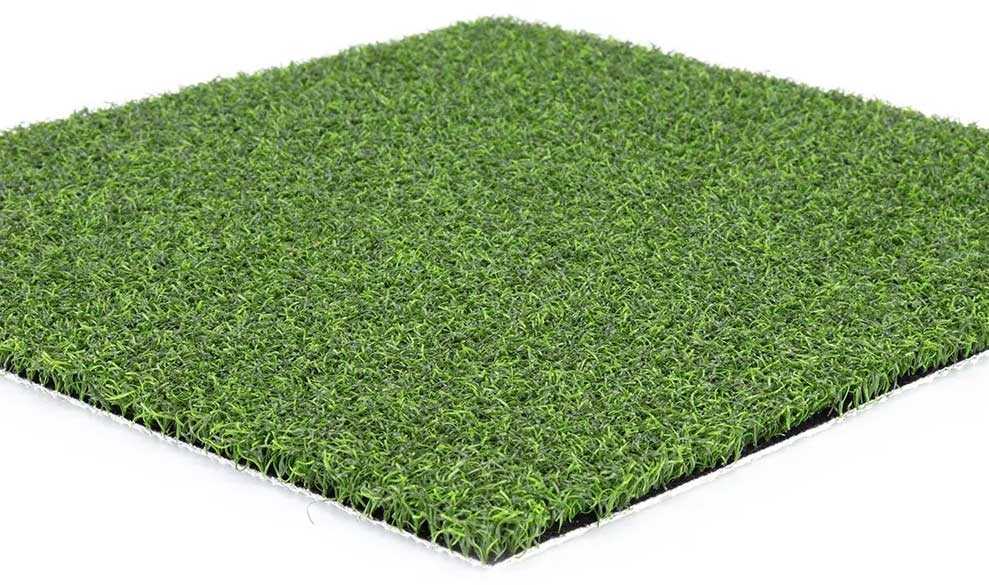
Yarn Type
Straight or texturized synthetic yarns are also options to choose from. For example, straight yarns are obvious, but texturized yarns are ones where the fiber strands have been bent.Textured yarns are picked by many golfers because they most closely resemble the grass on natural grass fields. Textured yarn is the best option when looking for a synthetic putting green.Fringe grass, the lengthier grass around your putting area, is excellent for chipping and prevents the ball from rolling off the green, but you can always use straight strands to construct it.
Pile Density
Pile density is the one of the first things to look for when searching for your putting green grass. Generally, the denser the pile, the better, provided it’s not so dense that it prevents the installation of an infill material. Anything around 80,000 stitches per square meter performs best.Dense piles are not only more hard-wearing and so capable of withstanding many hours of practice, but will also help to replicate a true ball roll speed.
Sparse piles tend to flatten very quickly and once this happens you lose the realistic ball roll.
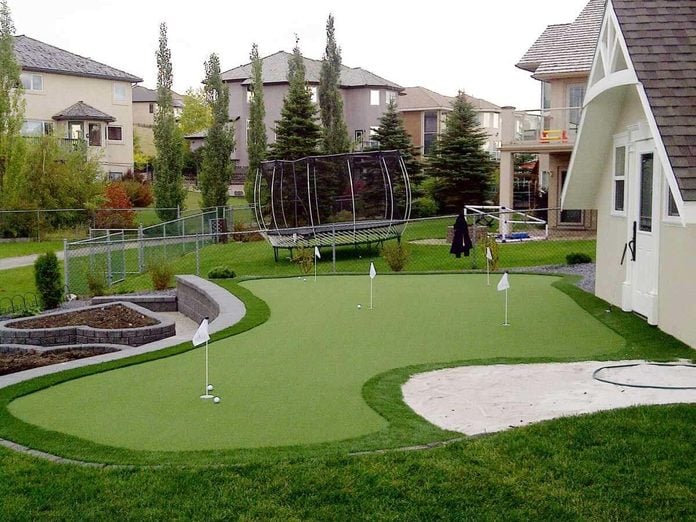
Sturdy Backing and Good Drainage
The backing is one of the crucial factors to consider when choosing the finest artificial grass for any use, not just golf-putting greens.You can have the strongest, best-performing yarn in the world but if the backing isn’t up to scratch then it’s irrelevant. The backing is what holds the entire lawn or green together. Without a strong backing the yarn will become detached, causing excessive loss of yarn, which in the case of a golf putting green will affect performance significantly.Artificial grass backing is made up of a primary and secondary layer and if you can pull them apart using your fingers,then this indicates a poor-quality backing.
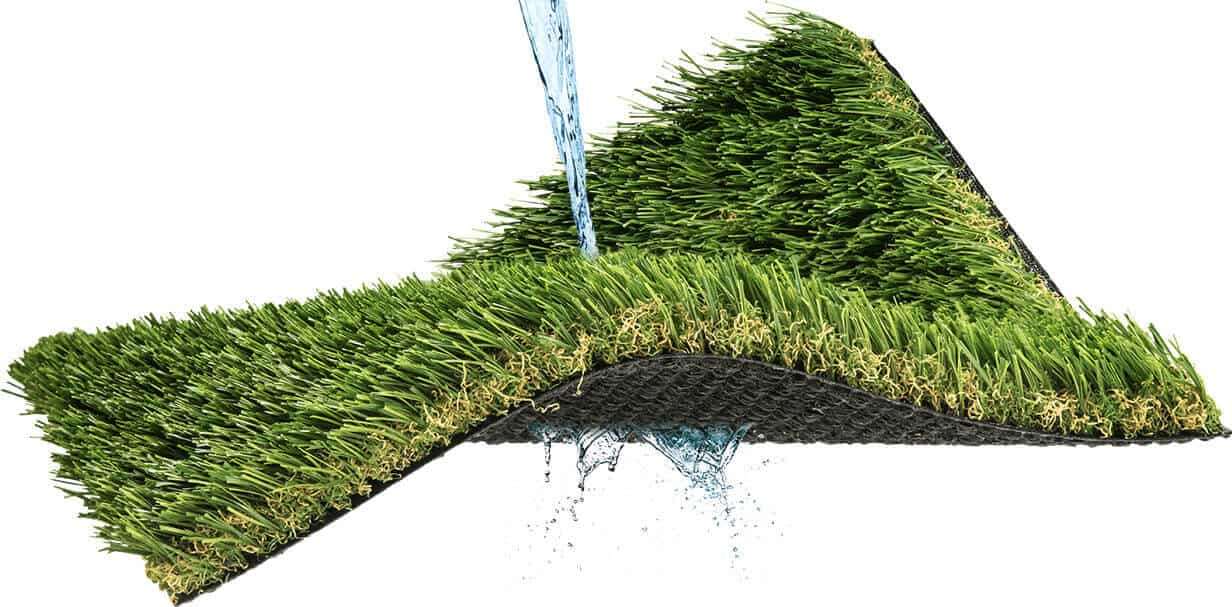
While drainage may not be a major concern for the relatively small area of a putting green, PU backing ensures effective drainage, maintaining the play ability of the surface.
Consider the Warranty
Check the warranty information for the indoor artificial putting green to ensure that you are protected against any defects or damage.
By following these steps, you can choose the best indoor artificial putting green for your home that meets your needs and fits your budget.
